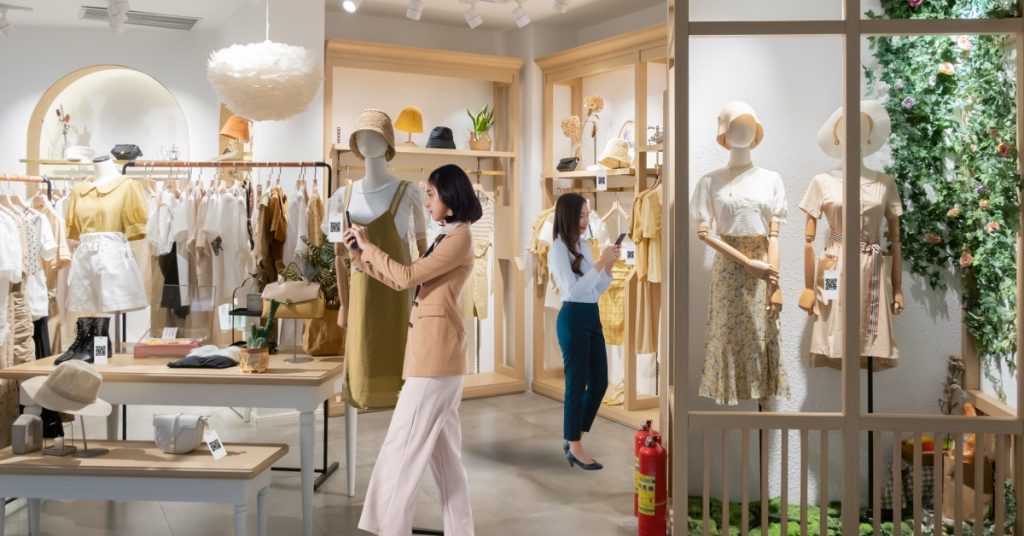In the competitive retail landscape, attracting customers and encouraging purchases is crucial for success. Visual merchandising plays a pivotal role in achieving these objectives. By strategically arranging products and creating engaging displays, retailers can enhance the shopping experience and drive sales. Below we’ll explain the various aspects of visual merchandising as well as its impact on retail performance.
Understanding Visual Merchandising
Visual merchandising is the practice of designing and organizing retail displays to maximize sales. It involves presenting products in a way that attracts, engages, and also motivates customers to make purchases. This discipline combines art and science, leveraging design principles, consumer psychology, and marketing strategies to create compelling in-store experiences. Effective VM can transform a retail space, making it more inviting and enticing for shoppers.
Moreover, visual merchandising is not limited to physical stores. E-commerce platforms also benefit from visually appealing product presentations. Online retailers use high-quality images, detailed descriptions, and user-friendly layouts to enhance the digital shopping experience. Understanding the principles of VM is essential for both brick-and-mortar and online stores.
The Importance of Visual Merchandising
Visual merchandising is crucial for several reasons. Firstly, it captures customers’ attention. In a crowded marketplace, visually appealing displays stand out and draw shoppers into the store. Attractive window displays, creative signage, and well-organized product arrangements make a strong first impression, encouraging customers to explore further.
Additionally, VM influences customer behavior. Strategic placement of products, effective use of color, lighting, and signage guide customers through the store and highlight key items. By creating a logical and enjoyable shopping journey, visual merchandising enhances the overall customer experience and increases the likelihood of purchases.
Furthermore, VM helps communicate brand identity. Consistent and cohesive displays reinforce brand values and aesthetics. This consistency builds brand recognition and loyalty, as customers associate positive shopping experiences with the brand. Visual merchandising is a powerful tool for differentiating a brand from its competitors.
Key Elements of Visual Merchandising
Several key elements contribute to successful visual merchandising. One of the fundamental aspects is layout and space management. Effective use of space ensures that the store is easy to navigate and products are easily accessible. Creating clear pathways and organizing products logically helps customers find what they are looking for and discover new items.
Moreover, color plays a significant role in VM. Different colors evoke various emotions and can influence buying decisions. For example, warm colors like red and yellow can create a sense of urgency, while cool colors like blue and green are calming. Choosing the right color schemes for displays can enhance the overall shopping experience.
Lighting is another critical element. Proper lighting highlights products, creates ambiance, and sets the mood of the store. Bright, focused lighting can draw attention to featured products, while softer lighting can create a relaxed shopping environment. Utilizing different types of lighting can enhance the visual appeal of the store and influence customer behavior.
Additionally, signage and graphics are essential for effective visual merchandising. Clear and attractive signage provides information, directs customers, and promotes products. Creative graphics and displays can capture attention and convey the brand’s message. Using signage strategically enhances the overall shopping experience and guides customers through the store.
Creating Engaging Displays
Creating engaging displays is a key aspect of visual merchandising. Displays should be dynamic, changing regularly to keep the store fresh and interesting. Seasonal themes, new product launches, and promotional events provide opportunities for creating eye-catching displays that attract customers.
Moreover, storytelling through displays can enhance engagement. Creating scenes or themes that tell a story or evoke emotions can make products more appealing. For example, a display featuring a summer picnic scene can effectively showcase outdoor products. Storytelling creates a connection with customers and encourages them to imagine using the products in their own lives.
Additionally, using props and accessories can add interest and context to displays. Props help create a cohesive theme and make products stand out. For example, placing shoes on pedestals or arranging clothing with complementary accessories can highlight the features and benefits of the products. Props and accessories enhance the visual impact of displays and make them more memorable.
The Role of Technology in Visual Merchandising
Technology plays an increasingly important role in visual merchandising. Digital signage, interactive displays, and augmented reality (AR) are transforming the way products are presented. These technologies provide dynamic and engaging experiences that attract and retain customers.
Moreover, digital signage offers flexibility and real-time updates. Retailers can easily change content to promote new products, sales, or events. Interactive displays and touchscreens provide customers with additional information and personalized recommendations. These technologies enhance the shopping experience and provide valuable insights into customer preferences and behavior.
Furthermore, augmented reality allows customers to visualize products in their own space. AR applications enable customers to see how furniture would look in their home or how clothes would fit. This interactive experience reduces uncertainty and increases confidence in purchasing decisions. The integration of technology in VM enhances customer engagement and drives sales.
Measuring the Effectiveness of Visual Merchandising
Measuring the effectiveness of visual merchandising is essential for continuous improvement. Retailers can use various metrics to assess the impact of their displays. Sales data, foot traffic, and customer feedback provide valuable insights into the effectiveness of VM strategies.
Additionally, in-store analytics and heat mapping technology can track customer movements and interactions with displays. This data helps retailers understand which areas of the store are most engaging and which products attract the most attention. Analyzing this information allows retailers to refine their VM strategies and optimize the shopping experience.
Furthermore, customer surveys and feedback provide qualitative insights into the shopping experience. Understanding customer preferences and perceptions helps retailers tailor their visual merchandising efforts to meet customer needs and expectations. Continuous measurement and analysis ensure that visual merchandising strategies remain effective and relevant.
Visual merchandising is a powerful tool for enhancing the shopping experience, driving sales, and building brand identity. By understanding the principles and elements of visual merchandising, retailers can create engaging and effective displays that attract and retain customers. Embracing technology and continuously measuring effectiveness ensures that VM strategies remain dynamic and impactful. Investing in visual merchandising is essential for success in the competitive retail landscape. Through creativity, strategy, and innovation, visual merchandising transforms retail spaces into captivating environments that inspire and delight customers.


